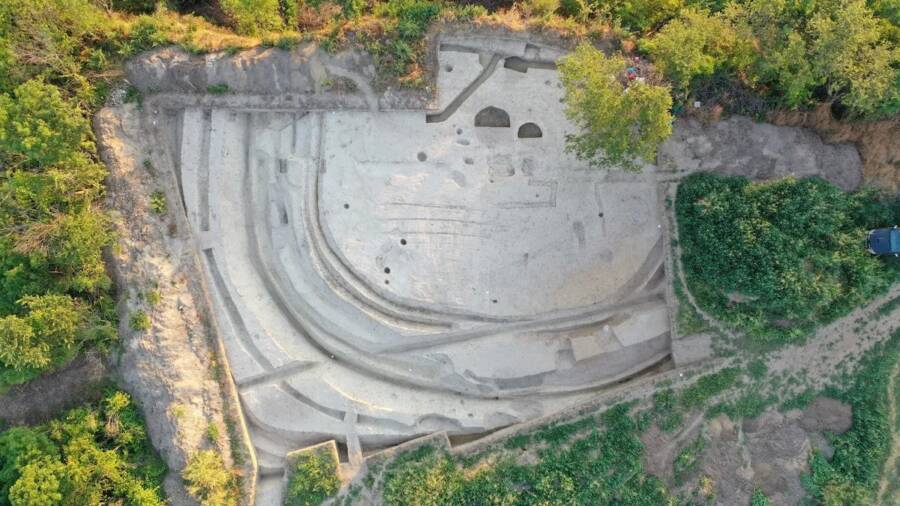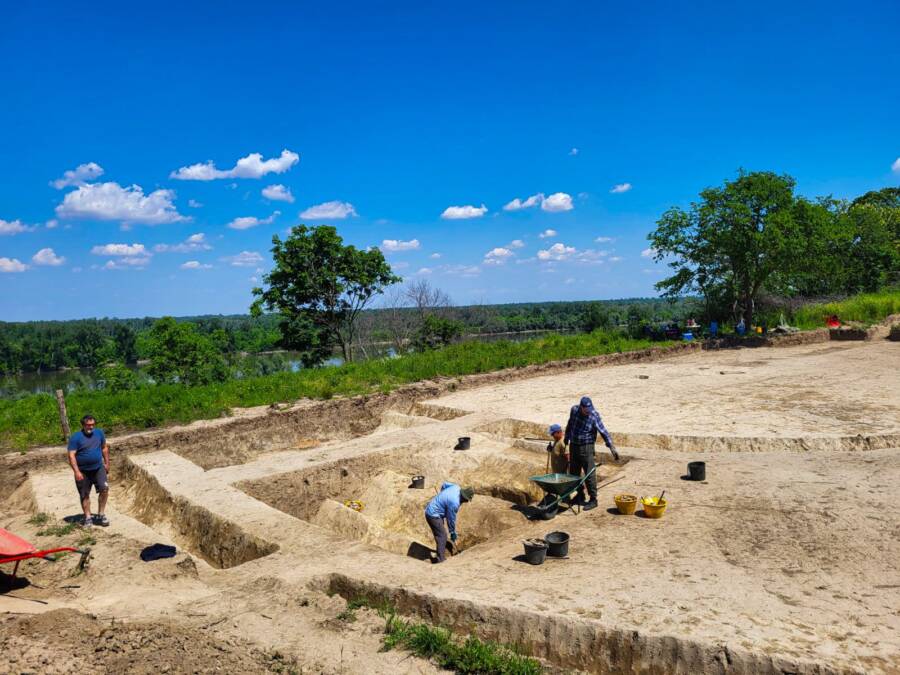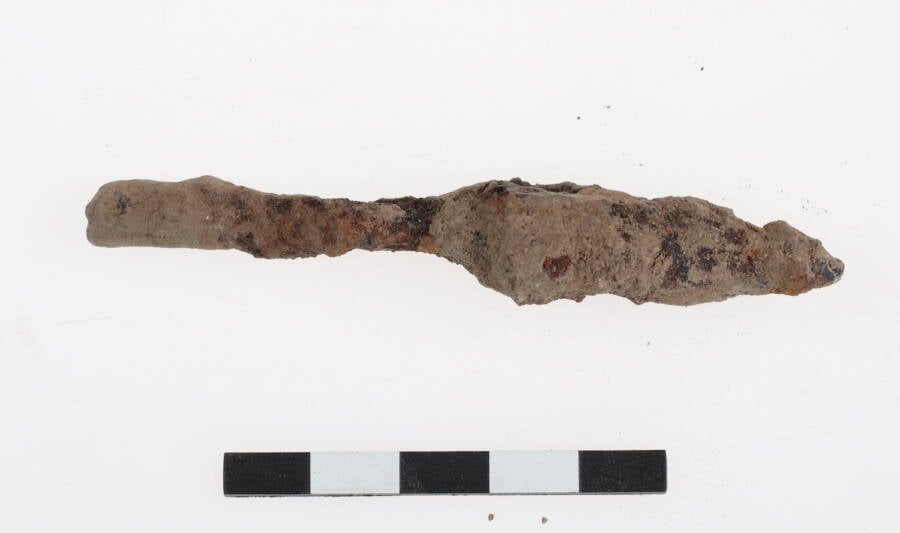The watchtower was part of the Danubian Limes on the northern reaches of the Roman Empire, where it was used to defend against Germanic tribes.

S. Stingl and H. Jambrek/Institute of Archaeology, ZagrebThe watchtower was located along the Danube River.
Almost 2,000 years ago, the ancient Romans constructed a string of watchtowers along the Danube River to defend the furthest reaches of their empire from Germanic tribes. Now, the remains of one of those towers have been unearthed in present-day Croatia.
Hidden for centuries and surrounded by artifacts like brooches, military equipment, and ceramics, the watchtower is a stunning representation of the extent of Rome’s power.
Discovering The Watchtower In Croatia
The site of the watchtower was first discovered along the banks of the Danube River in Croatia during field surveys between 2003 and 2023 by the Institute of Archaeology in Zagreb. Geomagnetic surveys in 2022 provided further evidence about the existence of Roman fortifications in the country, and physical surveys confirmed the presence of the watchtower in 2025.

Udruga Dolina Mamuta/FacebookExcavations in 2025 confirmed the presence of the Roman watchtower.
The structure, located in the Croatian town of Mohovo, measured roughly 130 by 100 feet and was strategically positioned alongside deep ravines. Some 1,800 years ago, it was heavily protected with ditches and a fence, and it was just one in a chain of Roman watchtowers that stretched along the river.
At the site, archaeologists also uncovered fibulas (brooches), ceramic pottery, iron arrows, and other artifacts, suggesting that the watchtower operated from the second century well into the third century. During that time, it likely played an important role in the Marcomannic Wars.
The Watchtower During The Marcomannic Wars

H. Jambrek/Institute of Archaeology, ZagrebAn iron arrow that was discovered during excavations at the Roman watchtower in Croatia.
The Marcomannic Wars, which lasted from roughly 166 C.E. to 180 C.E., began under Emperor Marcus Aurelius. During this time, the Romans were forced to defend their northern border, known as the Limes, against tribes like the Germanic Marcomanni and the nomadic Sarmatians.
In the region to the north of the empire, these tribes had begun to expand and clash with the Romans. In 166, the tribes pushed the Romans back all the way to Aquileia, a stronghold in northeastern Italy. The Romans responded with force and were able to turn the tide of the war by the 170s.
During the conflict, the Danube region was an especially important battlefield. The Romans sought to reinforce their frontier — the Danubian Limes — by increasing military spending. In Mohovo, the watchtower almost certainly played a role in the conflict, as it was strategically located along the river, within visual range of other watchtowers, and fortified against attack.

WikiRomaWiki/Wikimedia CommonsThe Column of Marcus Aurelius in Rome, which was erected to celebrate the Roman triumph in the Marcomannic Wars.
Though the Romans were triumphant during the conflict, their victory came at a cost. The Germanic tribes had shown that the Romans could be challenged militarily, and while the Romans tried to incorporate more diplomacy into their dealings with the tribes, they remained a threat.
Meanwhile, the Marcomannic Wars also marked the beginning of the end of the Pax Romana, an unprecedented period of peace and prosperity in Roman history that lasted from 27 B.C.E. until 180 C.E. Following the conflict, the Romans also had to manage outbursts of violence in territories like Britain.
But things didn’t stay quiet along the Danube when the conflict ended around 180 C.E. The threat that the Germanic tribes had posed during the Marcomannic Wars only increased as time went on, which led the Romans to continually update their line of watchtowers along the Limes. Archaeologists found that the fort in Mohovo underwent several stages of updates, and it was seemingly replaced in the fourth century.
As such, the watchtower unearthed along the Danube belongs to a pivotal moment in Roman history. The empire’s days of peace and prosperity were beginning to fade, and the Romans had begun increasing their military spending in order to maintain the borders. Over time, this increasingly large and unwieldy empire would help contribute to the Roman Empire’s collapse.
After reading about the 1,800-year-old Roman watchtower that was unearthed in Croatia, discover the wild stories of some of the worst Roman emperors to rule over the Roman Empire. Or, go inside the debate about when exactly the Roman Empire fell.





